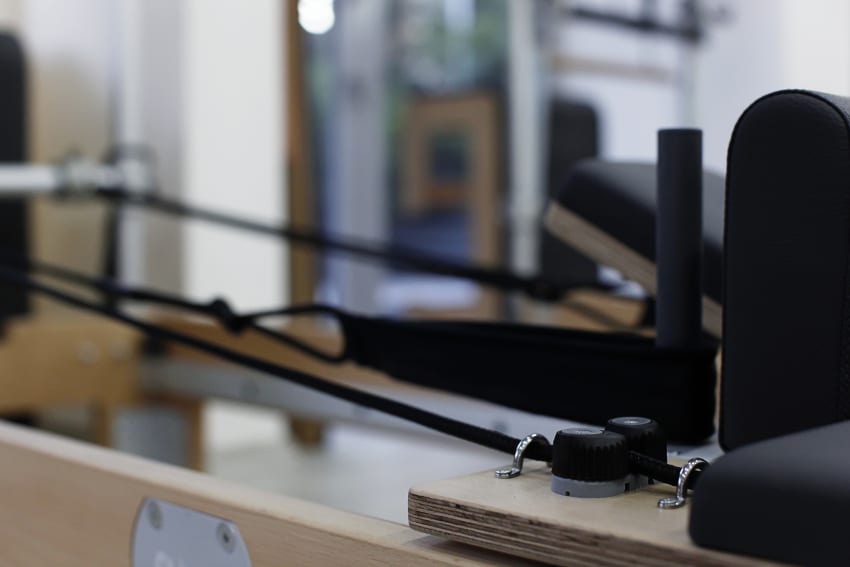There’s a general consensus. Sitting too much can be as harmful to your health as smoking. For many of us, though, sitting all day is literally our livelihood. More and more jobs are spent in front of a computer screen, then we often come home and watch television or play video games.
Sometimes a standing or treadmill desk is an option. However, there are also things you can do that can mitigate the effects of sitting and improve your health, flexibility, and mobility.
What Does Sitting All Day Do To Us? And Can Pilates Help?
Research has linked too much sitting (eight hours a day or more with no physical activity) to an increased risk of heart disease, diabetes, and some cancers. There’s also evidence that sitting too much:
- Has a negative impact on mental health, especially depression or anxiety.
- Weakens the large leg and gluteal muscles, meaning you’re more likely to fall and more likely to be injured if you do exercise.
- Causes weight gain.
- Shortens your hip flexors, affecting your flexibility in your hips.
- It causes poor spine health and premature spinal degeneration.
- Is a risk factor for varicose veins and deep vein thrombosis.
- Causes stiffness in your neck and shoulders.
Moderate physical activity can counter these problems. Pilates is particularly useful for a number of reasons. So wondering can Pilates help you? The answer is Yes!
Why is Pilates a Good Way to Counter the Negative Effects of Sitting?
So, what makes Pilates a particularly good exercise system for countering those negative effects? There are a number of reasons why adding Pilates to your routine can really help:
- Pilates eases back pain by increasing the strength of the muscles around the back.
- Improved core strength also improves your posture, which can reduce spinal degeneration and stiffness in your neck and shoulders.
- Pilates significantly improves mental health because it requires a high level of concentration, which helps you forget about the other things troubling you.
- Pilates doesn’t involve sweating and straining or working yourself to exhaustion. This means it can be done every day, unlike many other kinds of anaerobic exercise, although doing a full class every day is not recommended.
- You can do Pilates exercises that strengthen the specific muscles weakened by too much sitting. You can work on your hips, buttocks and legs.
- You can do Pilates even if you have mobility issues. An instructor can help come up with specific movements or variants that can even be done by people in wheelchairs.
- Pilates exercises can help you straighten your spine which can help with neck pain and compensate for ergonomic issues such as leaning forward when at your desk.
- You can do Pilates exercises with little equipment (a reformer is useful but not required) and in brief periods of time. This can allow you to get the required 60 to 75 minutes of daily exercise without feeling as if you are spending so much time on it.
How Can You Get Started in Pilates?
Although there are cell phone apps that claim to provide Pilates instruction, there is no substitute for proper instruction at a Pilates studio in Westwood. For many people group classes help with compliance, although a good Pilates program will include doing some work on your own.
If you have not exercised in some time, are obese, have a medical condition, are over 40 or pregnant, you should talk to your doctor before starting Pilates (or any other exercise program). If your doctor has any comments on things you should or should not do, get them to write a note that you can take to your instructor. For example, your doctor may recommend exercises to strengthen and improve flexibility in weakened knees.
You should wear form-fitting workout wear, including capris or leggings (not shorts, which will ride up when you are upside down). Loose clothes will make it harder for your instructor to see what you are doing and can sometimes get caught on equipment. Invest in socks with rubber detailing on the soles – you can’t do Pilates in shoes and normal socks may slip. Studios often lend socks, but getting your own is better, at least once you are sure you’re going to keep this up. Long hair should be tied back and you should not wear loose-fitting jewelry (including religious jewelry). If you wear a med-alert, a bracelet is safer than a necklace.
Always take a water bottle to class. You will need it. You will be able to fill it at the gym if needed, but you want the bottle next to you while you work out. As with anything else, if you experience pain you should back off and tell the instructor, who can help determine what the problem is and how to modify the exercise if needed.
Some studios may want to do a one-on-one orientation, others will put you straight into an appropriate class that suits your schedule. Going to class every day is probably too much; ideally, Pilates should be part of your workout routine, not all of it.
For doing Pilates work at home between classes, you should start by getting a mat (if you already have a yoga mat it will work). Enthusiasts may want to acquire a reformer, but bear in mind that you should not do complex Pilates exercises on your own until you have thoroughly learned them in class. It’s rare to injure yourself doing Pilates, but if you do, it will set you back majorly in your fitness quest.
If you are sitting too much, Pilates can be a lot of help as part of a workout program designed to compensate for the health problems, and both improve and extend your life. It’s also beneficial to your mental health, posture, and functional flexibility (such as picking things up off the floor, getting up off the floor, turning to lift things in and out of the car, etc). If you are interested in taking up Pilates, contact Sheppard Pilates today. Our Pilates studio in Westwood offers morning and evening classes, as well as daytime classes on weekends. We also have stretching classes and can give you shorter workouts you can do at home or even in your office during your breaks.

